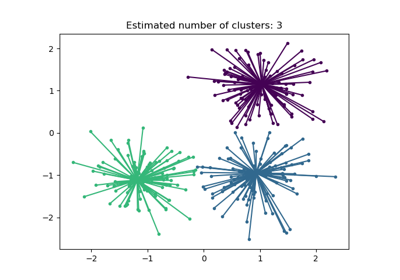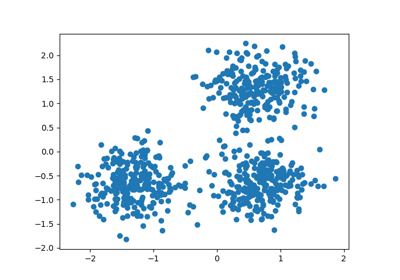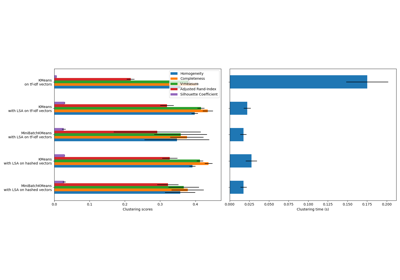silhouette_score#
- sklearn.metrics.silhouette_score(X, labels, *, metric='euclidean', sample_size=None, random_state=None, **kwds)[source]#
Compute the mean Silhouette Coefficient of all samples.
The Silhouette Coefficient is calculated using the mean intra-cluster distance (
a) and the mean nearest-cluster distance (b) for each sample. The Silhouette Coefficient for a sample is(b - a) / max(a, b). To clarify,bis the distance between a sample and the nearest cluster that the sample is not a part of. Note that Silhouette Coefficient is only defined if number of labels is2 <= n_labels <= n_samples - 1.This function returns the mean Silhouette Coefficient over all samples. To obtain the values for each sample, use
silhouette_samples.The best value is 1 and the worst value is -1. Values near 0 indicate overlapping clusters. Negative values generally indicate that a sample has been assigned to the wrong cluster, as a different cluster is more similar.
Read more in the User Guide.
- Parameters:
- X{array-like, sparse matrix} of shape (n_samples_a, n_samples_a) if metric == “precomputed” or (n_samples_a, n_features) otherwise
An array of pairwise distances between samples, or a feature array.
- labelsarray-like of shape (n_samples,)
Predicted labels for each sample.
- metricstr or callable, default=’euclidean’
The metric to use when calculating distance between instances in a feature array. If metric is a string, it must be one of the options allowed by
pairwise_distances. IfXis the distance array itself, usemetric="precomputed".- sample_sizeint, default=None
The size of the sample to use when computing the Silhouette Coefficient on a random subset of the data. If
sample_size is None, no sampling is used.- random_stateint, RandomState instance or None, default=None
Determines random number generation for selecting a subset of samples. Used when
sample_size is not None. Pass an int for reproducible results across multiple function calls. See Glossary.- **kwdsoptional keyword parameters
Any further parameters are passed directly to the distance function. If using a scipy.spatial.distance metric, the parameters are still metric dependent. See the scipy docs for usage examples.
- Returns:
- silhouettefloat
Mean Silhouette Coefficient for all samples.
References
Examples
>>> from sklearn.datasets import make_blobs >>> from sklearn.cluster import KMeans >>> from sklearn.metrics import silhouette_score >>> X, y = make_blobs(random_state=42) >>> kmeans = KMeans(n_clusters=2, random_state=42) >>> silhouette_score(X, kmeans.fit_predict(X)) 0.49...
Gallery examples#
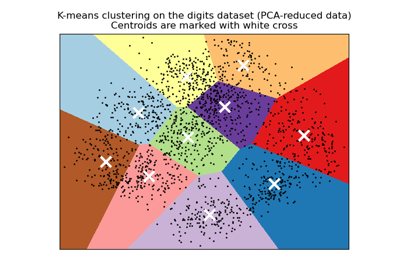
A demo of K-Means clustering on the handwritten digits data
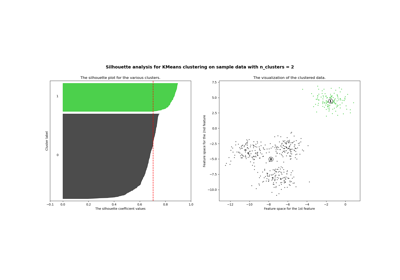
Selecting the number of clusters with silhouette analysis on KMeans clustering

